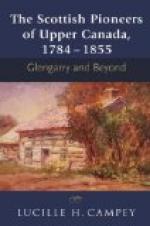There can be little doubt that between 1498 and 1505 these Bristol ships, directed by Italian, English, and Portuguese pilots, first revealed to the civilized world of western Europe the coasts of Newfoundland, Cape Breton Island, Nova Scotia, Massachusetts, and Delaware. They must have got as far south as the State of Delaware (according to Sebastian Cabot, their southern limit was lat. 38 deg.), because in 1505 they were able to bring back parrots ("popyngays"), as well as hawks and lynxes ("catts of the mountaigne"), for the delectation of King Henry; and parrots even at that period could not have been obtained from farther north than the latitude of New York.[8]
[Footnote 8: Almost certainly this was Conurus carolinensis, a green and orange parrakeet still found in the south-eastern States of North America, but formerly met with as far north as New York and Boston.]
But after 1505 English interest in “the Newe founde launde” and the “Newe Isle” languished; the exploration of North America was taken up and carried farther by Portuguese, Bretons and Normans of France, Italians, and Spaniards.[9] It revived again under Henry VIII, owing to the irresistible attraction of the Newfoundland fisheries and the knowledge that the ships from France were returning every autumn with great supplies of fish cured and salted; for an adequate supply of salt fish was becoming a matter of great importance to the markets of western Europe. In 1527 Henry VIII sent two ships under the command of John Rut to explore the North-American coast, and Captain Rut seems to have reached the Straits of Belle Isle between Newfoundland and Labrador (then blocked with ice so that he took them for a bay), and afterwards to have passed along the east coast of Newfoundland—already much frequented by the Bretons, Normans, and Portuguese—and to have stopped at the harbour of St. John’s, thence sailing as far south as Massachusetts.
[Footnote 9: The name America probably appears for the first time in English print in the old play or masque the Four Elements, which was published about 1518. In a review of the geography of the Earth, as known at that period, a description is given of this vast New World across the Ocean: “But these new landys found lately, been called America, because only Americus did find them first”. Americus was a Florentine bank clerk—Amerigo Vespucci—at Seville who gave up the counting-house for adventure, sailed with a Spanish captain to the West Indies and the mainland of Venezuela (off which he notes that he met an English sailing vessel, and this as early as 1499!), and then joined the first exploring voyage of the Portuguese to Brazil. He returned to Europe, and in a letter to a fellow countryman at Paris, written in the late autumn of 1502, he claimed to have discovered a New World across the Ocean. His clear statement about what was really the South American Continent aroused so much enthusiasm in civilized Europe that




